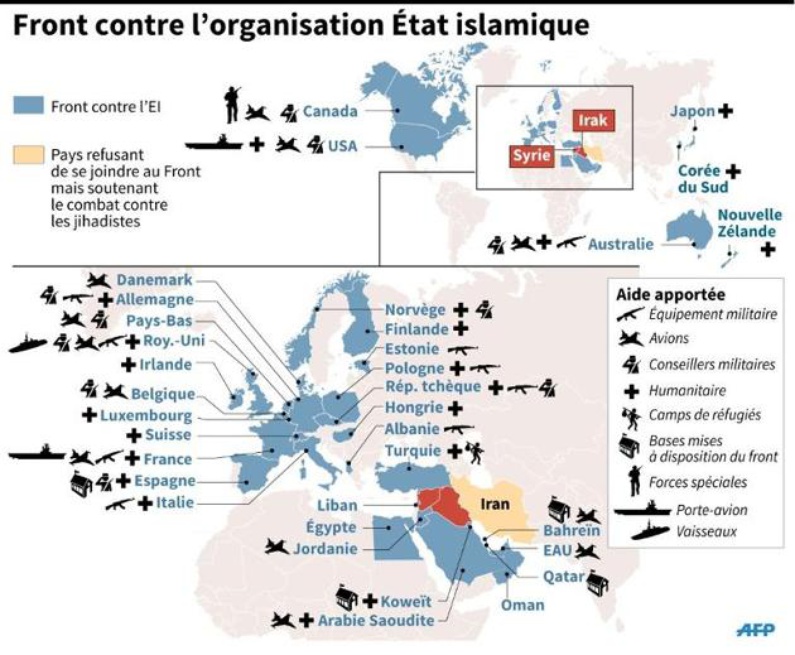
Why is Islamic State attacking cultural heritage?
Published on
Translation by:
 Jennifer-Anne Dove
Jennifer-Anne Dove
For several years, we have heard talk about the Islamic State and the threat it poses on the Middle East, and more widely in the world. After the cruelty towards the people of Iraq and Syria and foreign journalists, there's also another type of barbarity: cultural violence.
An ode to ignorance
The Islamic State (IS) is a terrorist organisation that aims to create a caliphate, in other words a nation ruled by a caliph, a "commander of believers (…) to maintain the unity of the Islamic World, to ensure its defence and its extension, to preserve its dogma against all innovations and to govern the empire".
It was important to define the term Caliph, because we find in this definition the same founding principles of the Islamic State. In effect, IS is not only in the process of ensuring its expansion, but is fighting with all its might to block any innovation and even is going as far as to increase archaism. It is trying to eradicate all traces of culture and knowledge because it rejects everything that doesn't fit into a fundamentalist reading of the Koran, everything that is part of a society it despises.
.
Finally, in destroying the historic monuments, such as Palmyra, Daech (the Arabic acronym for IS) wants to stamp its authority on the Iraqi and Syrian people by eradicating their respective cultural identity.
Taking Palmyra, more than a cultural catastrophe
 «
«
"This attack is much more than a cultural tragedy. It is equally a question of security because it feeds sectarianism, violent extremism and the conflict in Iraq." These were the words of the general director of Unesco, Irina Bokova, after the destruction of the museum at Mosul, in Iraq. And she is not mistaken as the destruction of the priceless artifacts serves the interest of IS on several levels. First of all, it is a tool to terrorise and manipulate the local population.
Thus, through a video posted by the terrorist organisation on the internet, we can see a member of IS say "Muslims, these relics that you see behind me are the idols that were venerated instead of Allah centuries ago". The sub-text here is: "if you believe in the one and only God, you should be offended that such places of worship devoted to other idols exist on Muslim soil". All this to return to the first days of Islam, to the time when the prophet Mohammed destroyed the sculptures of the idols worshipped by those he judged to be heretics.
On the other hand, the destruction and invasion of these millenia-old places of worship allows IS to pillage them and to sell their priceless artifacts on the black market. Effectively, this allows the terrorist group to finance itself and to profit from the cultural riches of the region. Clearly, they haven't managed to sell the most well-known pieces that they wanted, so they have made do with the mosaics and other statuettes that are easier to sell on the black market. According to an enquiry by the British newspaper The Guardian, the pillage of the region of Al-Nabuk in Syria brought in more than 28 million euros to the Islamic State.
Mesopotamian Culture in Danger
In acknowledging the relentless advancement of the Islamic State, lots of questions arise: how to restore and protect Mesoptamian culture ? Could military intervention put an end to these atrocities?
First of all, it is necessary to evaluate the damage caused by the pillages and destruction carried out by the terrorists. It is however very difficult to gain access to these areas, which are still warzones and still under the control of IS. To do this Philippe Lalliot, the French ambassador to UNESCO, envisages the possibility of using satellite images that allow them to make comparisons with images taken several years earlier,which would create a sufficiently precise inventory in order to start a restoration mission.
But beyond the restoration of the already damaged cultural works, how can one protect those which are still intact?
?
Direct military intervention (sending armed forcess) by a US-led coalition is not on the agenda. Nevertheless, countries like France or Great Britain are, in a certain way, on the front line. In fact, the French have already sent special forces as well cutting-edge weapons to help and train the Kurdish army to use these weapons.
Furthermore, bombings to weaken the Islamic State are already being carried out by this same coalition. And this may be bearing fruit, with Barack Obama recently delcaring that these bombardements have caused important losses, which come to around 1000 deaths each month for IS.
But how to counter the possibility that Mesopotamian cultural heritage is used by Daech terrorists as a shield against these bombardments? It's a thorny question, one among many, that political leaders who will have to respond to, to avoid the disappearance of one of the most beautiful cultural heritages in the world.
Translated from Pourquoi l'EI s'attaque aussi au patrimoine culturel ?


